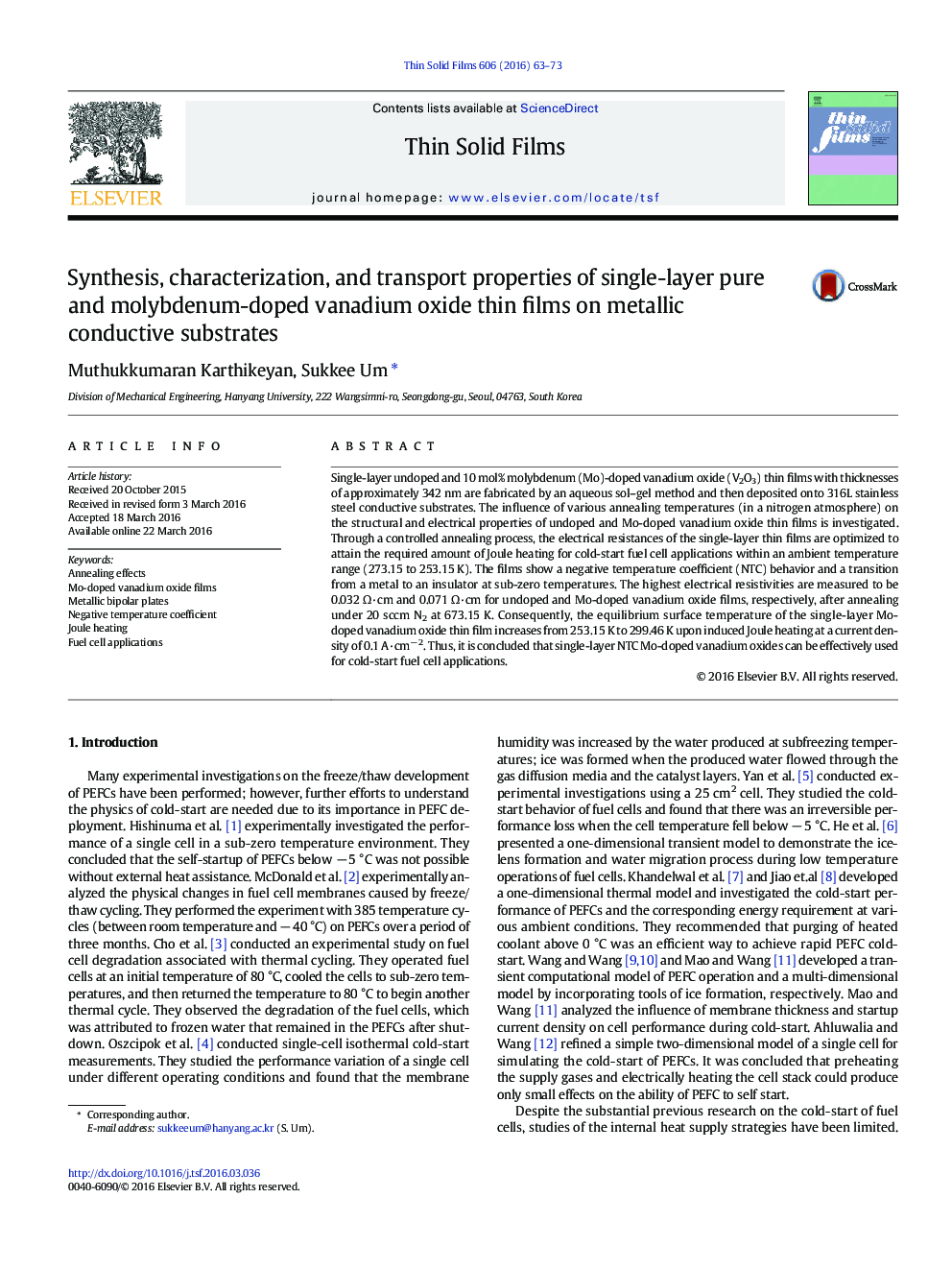| Article ID | Journal | Published Year | Pages | File Type |
|---|---|---|---|---|
| 1664026 | Thin Solid Films | 2016 | 11 Pages |
Abstract
Single-layer undoped and 10 mol% molybdenum (Mo)-doped vanadium oxide (V2O3) thin films with thicknesses of approximately 342 nm are fabricated by an aqueous sol-gel method and then deposited onto 316L stainless steel conductive substrates. The influence of various annealing temperatures (in a nitrogen atmosphere) on the structural and electrical properties of undoped and Mo-doped vanadium oxide thin films is investigated. Through a controlled annealing process, the electrical resistances of the single-layer thin films are optimized to attain the required amount of Joule heating for cold-start fuel cell applications within an ambient temperature range (273.15 to 253.15 K). The films show a negative temperature coefficient (NTC) behavior and a transition from a metal to an insulator at sub-zero temperatures. The highest electrical resistivities are measured to be 0.032 Ω·cm and 0.071 Ω·cm for undoped and Mo-doped vanadium oxide films, respectively, after annealing under 20 sccm N2 at 673.15 K. Consequently, the equilibrium surface temperature of the single-layer Mo-doped vanadium oxide thin film increases from 253.15 K to 299.46 K upon induced Joule heating at a current density of 0.1 A·cmâ 2. Thus, it is concluded that single-layer NTC Mo-doped vanadium oxides can be effectively used for cold-start fuel cell applications.
Keywords
Related Topics
Physical Sciences and Engineering
Materials Science
Nanotechnology
Authors
Muthukkumaran Karthikeyan, Sukkee Um,
